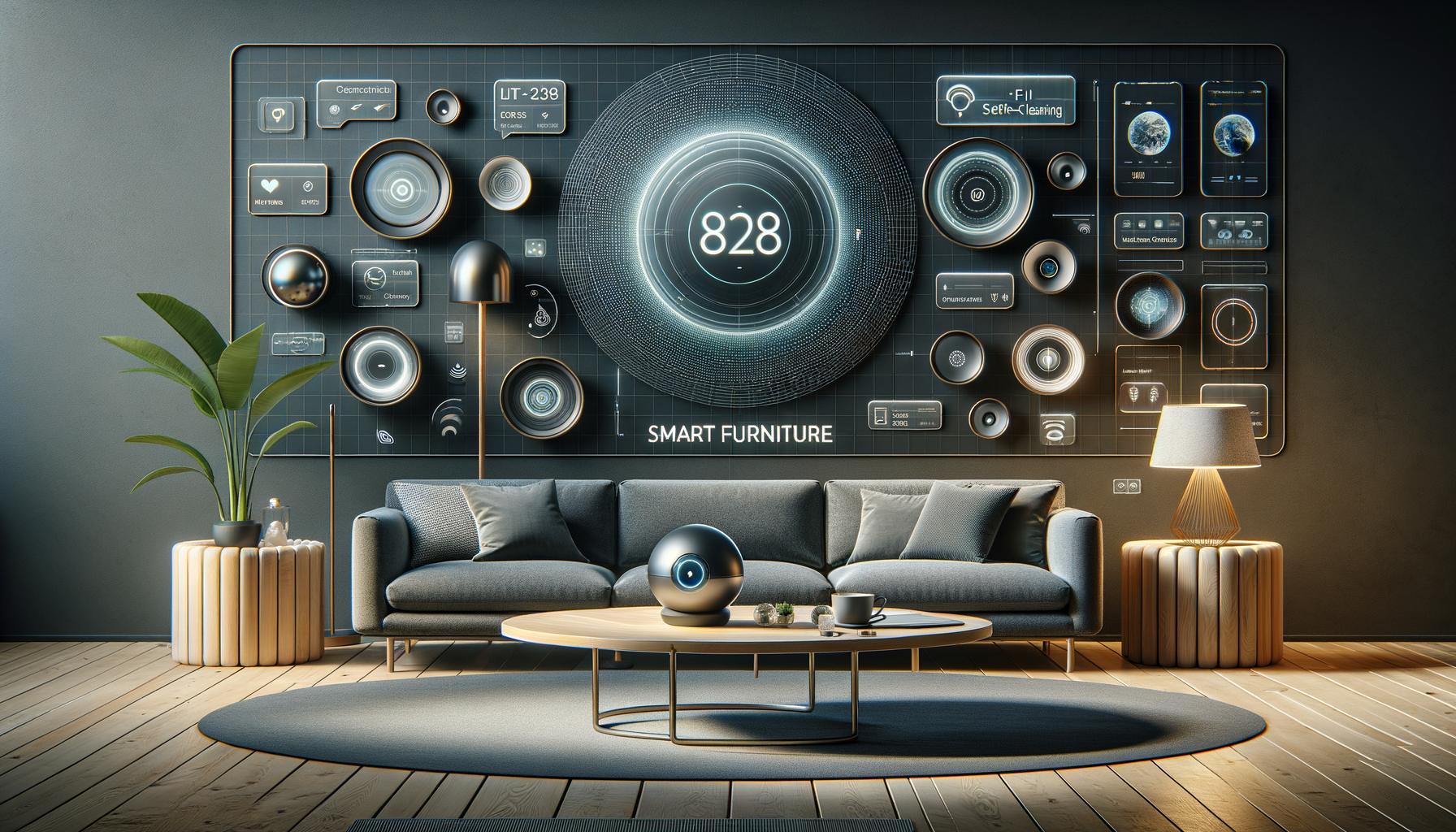Introduction to Smart Furniture
In the ever-evolving landscape of home design, smart furniture emerges as a pivotal trend that marries technology with everyday living. As homes become increasingly connected, the demand for furniture that not only serves a functional purpose but also integrates seamlessly with digital lifestyles is growing. This article explores the various facets of smart furniture, highlighting its importance in modern homes and how it enhances both style and utility.
Smart furniture is not just about aesthetics; it’s about creating an environment that adapts to your needs. Whether it’s a coffee table that charges your devices wirelessly or a bed that adjusts to your sleep patterns, the possibilities are endless. These innovative pieces are designed to make life more convenient and efficient, reflecting a shift towards more personalized and responsive living spaces.
The Evolution of Smart Furniture
The concept of smart furniture has evolved significantly over the past decade. Initially, the focus was on integrating technology into traditional furniture designs. Today, the emphasis is on creating multifunctional pieces that offer a blend of comfort, style, and technology. This evolution is driven by advancements in IoT (Internet of Things) and AI (Artificial Intelligence), which allow furniture to interact with other smart devices in the home.
For example, smart sofas now come equipped with built-in speakers, USB ports, and even massage functions. These features not only enhance the user experience but also add a layer of convenience to daily life. Similarly, smart desks with adjustable heights and integrated lighting systems are becoming popular in home offices, catering to the growing trend of remote work.
- Integration of IoT and AI in furniture design
- Focus on multifunctionality and user experience
- Growing popularity in home offices and living spaces
Benefits of Smart Furniture
Smart furniture offers numerous benefits that go beyond mere functionality. One of the primary advantages is the ability to optimize space. In urban areas where living spaces are limited, smart furniture provides innovative solutions that maximize utility without compromising on style. For instance, a smart bed can transform into a home office setup during the day, making it ideal for compact apartments.
Another significant benefit is energy efficiency. Many smart furniture pieces are designed to reduce energy consumption, contributing to a more sustainable lifestyle. Additionally, these pieces often come with features that promote health and well-being, such as ergonomic designs and adjustable settings that cater to individual preferences.
- Space optimization in small living areas
- Energy-efficient designs for sustainability
- Health-promoting features like ergonomic designs
Challenges in Adopting Smart Furniture
Despite its many benefits, the adoption of smart furniture is not without challenges. One of the main obstacles is the cost. The integration of advanced technology into furniture designs often results in higher prices, making it less accessible to the average consumer. Additionally, there is a learning curve associated with using smart furniture, as users must familiarize themselves with new features and functionalities.
Another challenge is compatibility. As smart homes become more prevalent, ensuring that smart furniture is compatible with existing systems and devices is crucial. This requires manufacturers to adhere to standard protocols and provide seamless integration, which can be a complex and costly process.
- High cost of advanced technology integration
- Learning curve for new users
- Compatibility with existing smart home systems
The Future of Smart Furniture
The future of smart furniture is promising, with continuous advancements in technology paving the way for more innovative designs. As AI and machine learning become more sophisticated, smart furniture will likely become even more intuitive, adapting to users’ needs in real-time. This could lead to the development of furniture that anticipates user behavior and preferences, offering a truly personalized experience.
Moreover, the focus on sustainability is expected to grow, with manufacturers exploring eco-friendly materials and energy-efficient technologies. This aligns with the increasing consumer demand for products that are not only functional and stylish but also environmentally responsible.
- Advancements in AI and machine learning
- Increased focus on sustainability and eco-friendly materials
- Development of more intuitive and personalized furniture



Leave a Reply